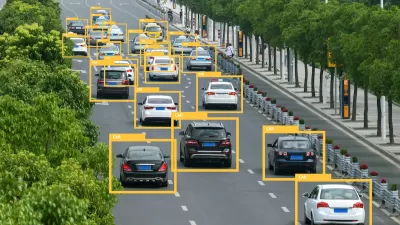Like other technologies, artificial intelligence tech seems to be clustering in a small group of cities, prompting questions about its uneven deployment.

Artificial intelligence, writes Richard Florida, "is predicted to have substantial economic impacts, adding as much as $15.7 trillion to global economic output by 2030." According to "a new Brookings Metro study that digs into the geography of AI at the metro level," AI "threatens to reinforce or magnify the same geographically uneven patterns of previous high-technology industries that are concentrated in leading tech hubs and superstar cities across the U.S."
The study finds that "just 10% of U.S. metropolitan areas — 36 of them — have a significant AI presence." The San Francisco Bay Area is "far and away the lone U.S. leader in AI." Thirteen other metro areas have "significant AI clusters, which the study calls early adopters." The study names "21 additional metro areas that have substantial research capability but limited commercialization," and a fourth group comprised of "87 metro areas that the study dubs 'potential adoption centers' with more moderate levels of AI activity." Beyond that, "the study finds very little, if any, significant AI capability in the lion’s share of U.S. metro areas, a staggering 260 of them in all."
In a hopeful sign, "[s]everal metro areas saw significant increases in AI-related job postings in 2020, while the Bay Area saw a slight decline. It may well be the case that geographic shifts in AI technology, jobs or startups may not show up in data for several years." But for now, AI's growth mirrors that of other technologies, where "new technologies and industries grow up around a small number of dominant tech hubs."
According to Florida, "[f]ederal intervention will likely be required to counter and reshape the powerful trends at work in the geography of artificial intelligence." Otherwise, "[l]eft to its own devices, AI is just the latest technology that will serve to reinforce and exacerbate the winner-take-all nature of our economy and geography."
FULL STORY: What the AI Economy Means for Cities

Study: Maui’s Plan to Convert Vacation Rentals to Long-Term Housing Could Cause Nearly $1 Billion Economic Loss
The plan would reduce visitor accommodation by 25,% resulting in 1,900 jobs lost.

North Texas Transit Leaders Tout Benefits of TOD for Growing Region
At a summit focused on transit-oriented development, policymakers discussed how North Texas’ expanded light rail system can serve as a tool for economic growth.

Why Should We Subsidize Public Transportation?
Many public transit agencies face financial stress due to rising costs, declining fare revenue, and declining subsidies. Transit advocates must provide a strong business case for increasing public transit funding.

How to Make US Trains Faster
Changes to boarding platforms and a switch to electric trains could improve U.S. passenger rail service without the added cost of high-speed rail.

Columbia’s Revitalized ‘Loop’ Is a Hub for Local Entrepreneurs
A focus on small businesses is helping a commercial corridor in Columbia, Missouri thrive.

Invasive Insect Threatens Minnesota’s Ash Forests
The Emerald Ash Borer is a rapidly spreading invasive pest threatening Minnesota’s ash trees, and homeowners are encouraged to plant diverse replacement species, avoid moving ash firewood, and monitor for signs of infestation.
Urban Design for Planners 1: Software Tools
This six-course series explores essential urban design concepts using open source software and equips planners with the tools they need to participate fully in the urban design process.
Planning for Universal Design
Learn the tools for implementing Universal Design in planning regulations.
Ascent Environmental
Borough of Carlisle
Institute for Housing and Urban Development Studies (IHS)
City of Grandview
Harvard GSD Executive Education
Toledo-Lucas County Plan Commissions
Salt Lake City
NYU Wagner Graduate School of Public Service





























